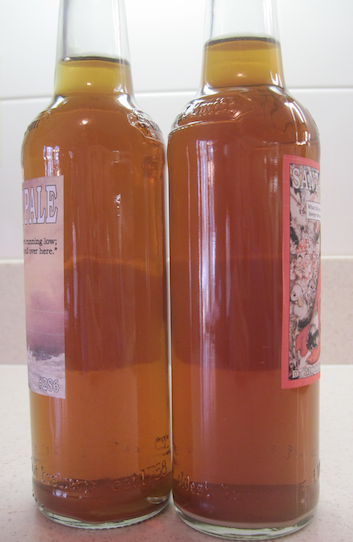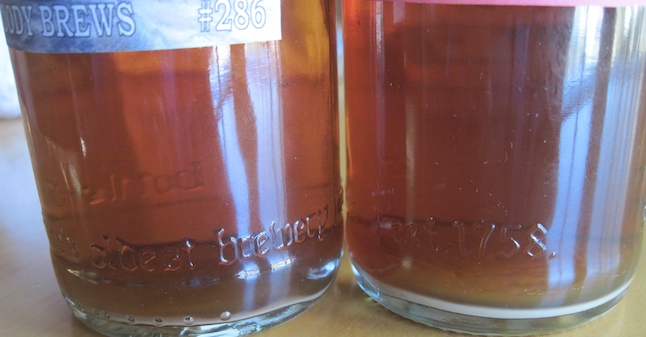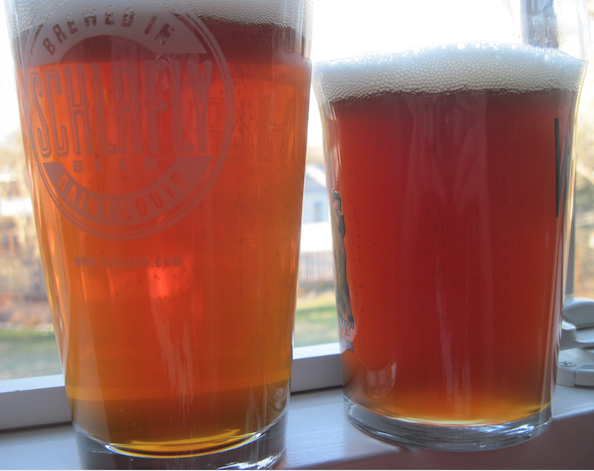Good discussion going on here. I have only been brewing a few years and do all extract with steeping (mainly with DME). I used a secondary for my first few batches, but then read enough about it being unnecessary that I removed it from my process. For the last 30 batches or so I have not used a secondary, but I did start using Irish Moss and cold crashing after reading about them on HBT.
These two steps have made a big difference in the clarity of my beers. When I first started cold-crashing I had to move the fermenter into a fridge which may have provided the jostling that @Bobby_M mentions above. Now I do all of my fermenting in a chest freezer connected to an Inkbird (also using a fermowrap) so I can cool to crash temp without moving the fermonster. The beer comes out very clear but I have taken to crashing for 48-72 hours based on some reading on HBT. The crashing seems to be a big deal because it appears to cause the trub to pack down fairly tightly in the bottom of the fermonster (which also has a lowered section for the trub to collect in) so even when I lift the fermonster so I can gravity feed to bottling bucket I do not see much sediment reintroduced.
As a first year newbie I stopped using the secondary because of 1) the time and extra steps it required, and 2) the comments about oxidation. However, <BLASPHEMY ALERT>, as a second year newbie, I wonder if the fear of oxidation is at times overblown. I understand that oxidation can be an issue, but in my brewing now I have to open the fermonster top once or twice to check gravity. I also open it when I transfer to a bottling bucket and then of course the bottling bucket itself is open. All of these steps allow oxygen contact with the beer, but I am careful to move as gently and as quickly as possible and so far my beers remain good tasting and have appropriate color.
All that to say, I think using a secondary to condition and clarify beer is entirely up to the brewer and a brewer should not be overly concerned about oxidation or sedimentation whether using one or not - as long as they understand the pros and cons of their process and are careful in executing it.
But this discussion has now evolved to include taste differences and that has me interested. Since I was very new when I dropped the secondary process I may have missed some taste differences that I now wish to explore. It seems like secondary use could be another subtle impact that I could use to my advantage at times. Sort of like bagging vs non-bagging hops in the kettle. The impact maybe subtle, but like @D.B.Moody talked about, does it soften flavors? At times that might be valuable.
Hmm, so many paths to explore. I love this hobby!
These two steps have made a big difference in the clarity of my beers. When I first started cold-crashing I had to move the fermenter into a fridge which may have provided the jostling that @Bobby_M mentions above. Now I do all of my fermenting in a chest freezer connected to an Inkbird (also using a fermowrap) so I can cool to crash temp without moving the fermonster. The beer comes out very clear but I have taken to crashing for 48-72 hours based on some reading on HBT. The crashing seems to be a big deal because it appears to cause the trub to pack down fairly tightly in the bottom of the fermonster (which also has a lowered section for the trub to collect in) so even when I lift the fermonster so I can gravity feed to bottling bucket I do not see much sediment reintroduced.
As a first year newbie I stopped using the secondary because of 1) the time and extra steps it required, and 2) the comments about oxidation. However, <BLASPHEMY ALERT>, as a second year newbie, I wonder if the fear of oxidation is at times overblown. I understand that oxidation can be an issue, but in my brewing now I have to open the fermonster top once or twice to check gravity. I also open it when I transfer to a bottling bucket and then of course the bottling bucket itself is open. All of these steps allow oxygen contact with the beer, but I am careful to move as gently and as quickly as possible and so far my beers remain good tasting and have appropriate color.
All that to say, I think using a secondary to condition and clarify beer is entirely up to the brewer and a brewer should not be overly concerned about oxidation or sedimentation whether using one or not - as long as they understand the pros and cons of their process and are careful in executing it.
But this discussion has now evolved to include taste differences and that has me interested. Since I was very new when I dropped the secondary process I may have missed some taste differences that I now wish to explore. It seems like secondary use could be another subtle impact that I could use to my advantage at times. Sort of like bagging vs non-bagging hops in the kettle. The impact maybe subtle, but like @D.B.Moody talked about, does it soften flavors? At times that might be valuable.
Hmm, so many paths to explore. I love this hobby!


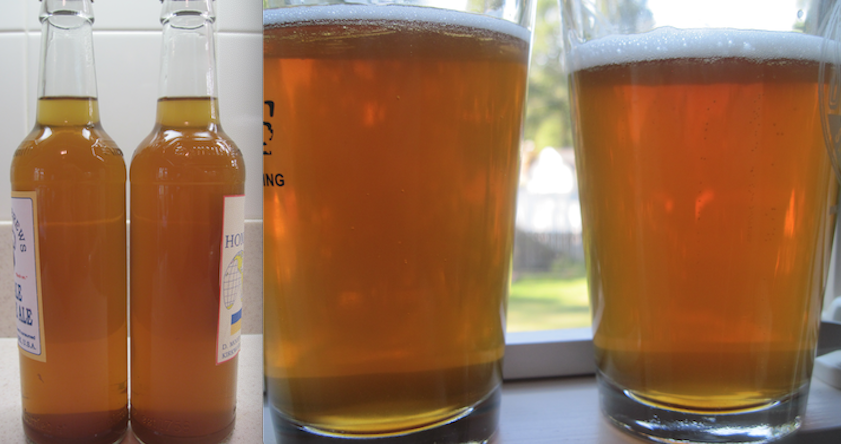
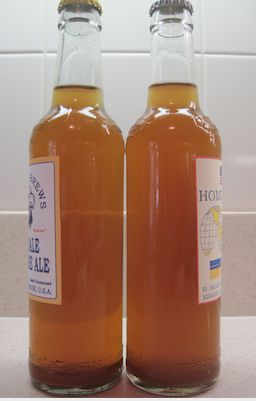











































![Craft A Brew - Safale BE-256 Yeast - Fermentis - Belgian Ale Dry Yeast - For Belgian & Strong Ales - Ingredients for Home Brewing - Beer Making Supplies - [3 Pack]](https://m.media-amazon.com/images/I/51bcKEwQmWL._SL500_.jpg)














